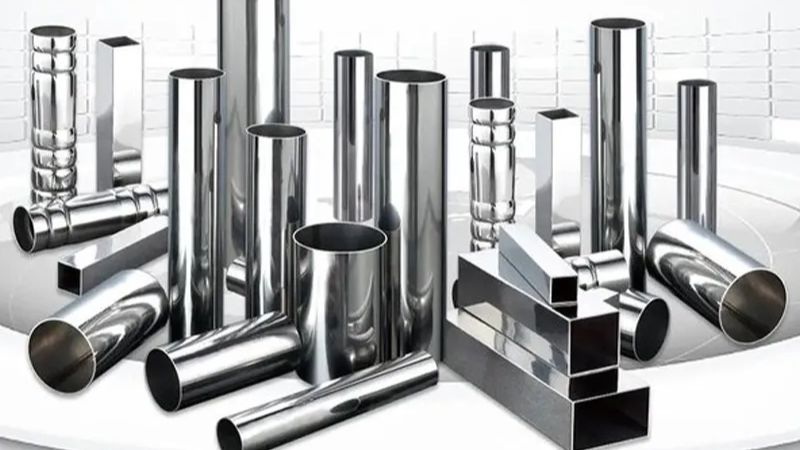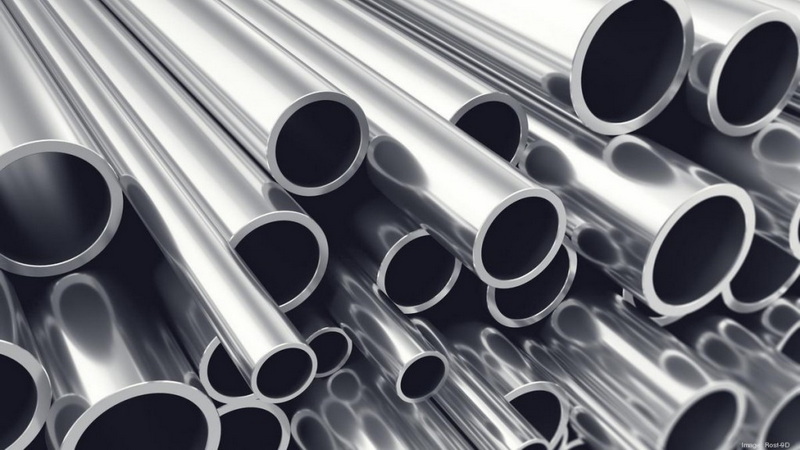English


Views: 222 Author: Tomorrow Publish Time: 2025-07-07 Origin: Site











Content Menu
● Understanding the Stainless Steel Industry Landscape
● Key Attributes That Make a Stainless Steel Manufacturer Stand Out
>> 1. Superior Product Quality and Material Expertise
>> 2. Advanced Manufacturing Technologies and Innovation
>> 3. Commitment to Sustainability and Environmental Responsibility
>> 4. Comprehensive Supply Chain and Customer Service
>> 5. Global Reach and Strategic Partnerships
>> 6. Strong Brand Reputation and Industry Certifications
● Challenges Faced by Stainless Steel Manufacturers
● FAQ
>> 1. What are the most important qualities of a high-quality stainless steel manufacturer?
>> 2. How does sustainability impact stainless steel manufacturing?
>> 3. Why is innovation critical in stainless steel manufacturing?
>> 4. How do global partnerships benefit stainless steel manufacturers?
>> 5. What role does customer service play in distinguishing stainless steel manufacturers?
In the highly competitive stainless steel industry, manufacturers face numerous challenges ranging from technological advancements to sustainability demands. Standing out as a stainless steel manufacturer requires more than just producing quality steel; it involves innovation, strategic growth, customer focus, and operational excellence. This article explores the key factors that differentiate leading stainless steel manufacturers in today's global market.

Stainless steel is prized for its corrosion resistance, strength, and aesthetic appeal, making it a preferred material in many sectors including construction, automotive, healthcare, and consumer goods. The global stainless steel market is dominated by companies such as Jindal Stainless, Tata Steel, SAIL, and Outokumpu, who continuously adapt through new product launches, partnerships, and sustainability initiatives. The industry is also shaped by regulatory reviews and global trade dynamics, which require manufacturers to remain agile and forward-thinking.
A standout stainless steel manufacturer must deliver products that meet stringent quality standards. Stainless steel's properties—such as corrosion resistance, durability, and heat resistance—are directly influenced by its composition and processing. Manufacturers that excel invest heavily in research and development to optimize alloy formulations (e.g., 304 and 316 grades) and ensure consistent performance under demanding conditions. High tensile strength and resistance to mechanical stress are critical for industrial applications, and manufacturers who master these qualities gain a competitive edge.
Furthermore, quality assurance processes such as rigorous testing, including tensile strength tests, corrosion resistance evaluations, and surface finish inspections, are essential. Manufacturers with in-house laboratories and certified testing protocols can guarantee product reliability, which is vital for sectors like aerospace and medical devices where failure is not an option.
Leading manufacturers integrate cutting-edge technologies such as automation, computerization, and precision fabrication techniques. These innovations improve production efficiency, reduce waste, and enable the creation of complex stainless steel components. The adoption of Industry 4.0 principles—like smart factories and real-time monitoring—also enhances quality control and operational transparency. Innovation extends beyond production to include new product development tailored to emerging market needs and environmental standards.
For example, the use of additive manufacturing or 3D printing with stainless steel powders is an emerging trend that allows for rapid prototyping and production of intricate parts with minimal material waste. Additionally, advancements in surface treatment technologies, such as electropolishing and passivation, improve corrosion resistance and aesthetic appeal, setting manufacturers apart in quality and finish.
Sustainability is no longer optional; it's a critical differentiator. Stainless steel manufacturers who prioritize eco-friendly practices—such as reducing carbon footprints, recycling scrap metal, and minimizing energy consumption—are better positioned to meet regulatory requirements and customer expectations. Many leading companies have integrated sustainability into their core strategies, reflecting a growing global emphasis on green manufacturing and circular economy principles.
Recycling stainless steel scrap is especially important since stainless steel is 100% recyclable without loss of quality. Manufacturers that establish closed-loop recycling systems reduce raw material dependency and environmental impact. Moreover, energy-efficient furnaces and renewable energy integration in production facilities further enhance sustainability credentials.
A robust supply chain ensures timely delivery and availability of stainless steel products. Manufacturers that maintain strong relationships with raw material suppliers and logistics partners can better manage costs and respond to market fluctuations. Additionally, exceptional customer service—including technical support, customization options, and after-sales care—builds trust and long-term partnerships. Manufacturers who provide value-added services, such as consultancy on material selection and fabrication, distinguish themselves in the marketplace.
Customization is particularly important in stainless steel manufacturing because different industries require tailored specifications. Offering flexible order quantities, bespoke alloy compositions, and specialized finishing services accommodates diverse client needs. Real-time order tracking and responsive communication channels also enhance customer satisfaction.
In a globalized industry, manufacturers with international presence and strategic alliances have a competitive advantage. Collaborations with other industry players, technology providers, and research institutions foster innovation and market expansion. Companies that can navigate complex trade environments and adapt to regional demands while maintaining consistent quality standards stand out as reliable partners worldwide.
Expanding into emerging markets through joint ventures or local partnerships allows manufacturers to tap into new customer bases and reduce logistical challenges. Additionally, participation in international standards committees and industry forums helps manufacturers stay ahead of regulatory changes and technological trends.
Trust and credibility are essential in stainless steel manufacturing. Companies that maintain rigorous quality certifications (ISO, ASTM, etc.) and comply with international standards demonstrate reliability. A strong brand reputation, built on decades of consistent quality and ethical business practices, attracts high-profile clients and projects. Transparency in operations and adherence to safety and environmental regulations further enhance a manufacturer's standing.
Certifications such as ISO 9001 for quality management, ISO 14001 for environmental management, and OHSAS 18001 for occupational health and safety are often prerequisites for working with major industrial clients. Manufacturers who invest in these certifications signal their commitment to excellence and continuous improvement.

While many manufacturers strive to stand out, they face challenges such as fluctuating raw material prices, intense global competition, and evolving customer requirements. Labor costs, regulatory changes, and the need for continuous technological upgrades also pressure manufacturers to innovate and optimize operations. Those who successfully navigate these challenges by leveraging their strengths and embracing change are those who ultimately distinguish themselves.
Raw material volatility, especially in nickel and chromium prices, can impact production costs significantly. Manufacturers with strong supplier networks and hedging strategies are better equipped to manage these fluctuations. Moreover, adapting to stricter environmental regulations requires investments in cleaner technologies and process improvements.
What makes a stainless steel manufacturer stand out is a combination of superior product quality, technological innovation, sustainability commitment, excellent customer service, global strategic positioning, and a strong brand reputation. In an industry marked by rapid change and fierce competition, manufacturers who integrate these elements into their business model are best equipped to thrive and lead the market. By continuously investing in technology, embracing sustainability, and focusing on customer needs, stainless steel manufacturers can not only survive but excel in the evolving industrial landscape.

A high-quality stainless steel manufacturer prioritizes product consistency, advanced technology use, sustainability, and customer service. They ensure their products meet international standards and adapt to market needs.
Sustainability influences manufacturing through energy efficiency, recycling, and reducing emissions. Manufacturers focusing on green practices comply with regulations and appeal to environmentally conscious customers.
Innovation enables manufacturers to improve product quality, reduce costs, and develop new applications. It involves adopting automation, smart technologies, and new alloy formulations to stay competitive.
Global partnerships expand market reach, share technological expertise, and improve supply chain resilience. They help manufacturers adapt to regional demands and regulatory environments.
Exceptional customer service builds trust and loyalty. Offering technical support, customization, and timely delivery enhances customer satisfaction and differentiates manufacturers in a competitive market.
Seven Requirements for External Doors And Windows of Passive Rooms
How Much Do You Know about The Design Standards for Aluminum Alloy Door And Window Dimensions?
Welding Vs Stainless Steel Fabrication: Understanding The Manufacturing Process Differences
Stainless Steel Fabrication Vs Powder Coated Steel: Durability And Cost Comparison
CNC Machining Vs Stainless Steel Fabrication: Pros And Cons for Industrial Use
Stainless Steel Fabrication Vs Carbon Steel Fabrication: Key Differences Explained
Stainless Steel Fabrication Vs Aluminum Fabrication: Which Is Right for Your Project?
Stainless Steel Grades 201 Vs 304: Cost Vs Performance Breakdown
316L Vs 316 Stainless Steel Grades: Which Is Better for Corrosion Resistance?
Comparing Austenitic Vs Martensitic Stainless Steel Grades: What You Need To Know?
